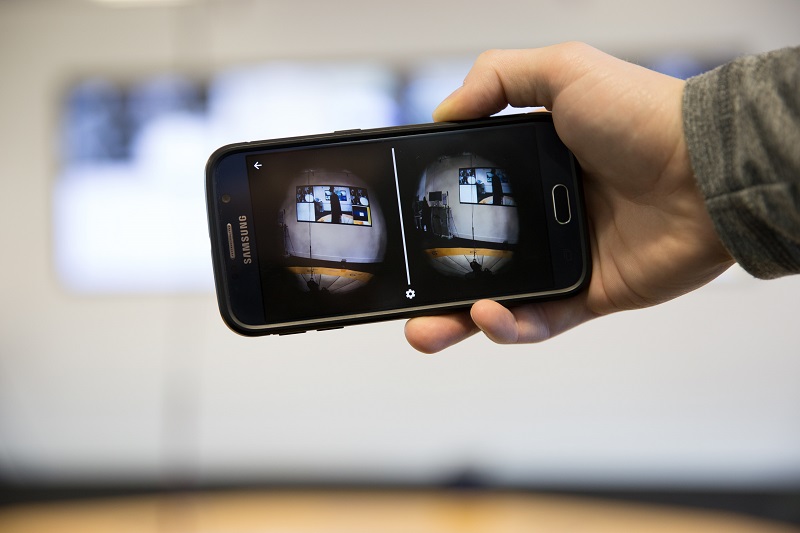Eyeware app
A virtual reality tool has been created to help designers improve buildings and public transport for people with sight loss.
Royal National Institute of Blind People (RNIB) statistics suggest that more than two million people in the UK are affected by sight loss, and by 2050, this will double to nearly four million. Findings from the RNIB’s 2015 ‘My Voice’ survey revealed that 40% of blind and partially-sighted people were not able to make all the journeys they wanted or needed to because of a lack of accessibility.
The smartphone app – Eyeware - launched in March 2017, allows users to experience the world around them from the viewpoint of people with a range of different sight loss conditions. Eyeware was developed in collaboration with RNIB and applies virtual filters over the surrounding environment which mimic sight loss conditions in real time.
Users can experience simulations of diabetic retinopathy, retinitis pigmentosa, cataracts and glaucoma.
The filters are being used at the Transport Systems Catapult to help design accessible transport systems at the organisation’s ‘Visualisation Laboratory’. This unique facility is designed to help industry develop virtual reality (VR) and augmented reality (AR) applications.
Project leader Martin Pett, Principle Technologist at the Transport Systems Catapult, said; “Urban environments like stations and new technology, can be confusing for anyone, but the difficulties this causes can be increased 10-fold when someone is blind or partially sighted. Our app allows users to put themselves in the shoes of people with sight loss conditions, so they can make better decisions about accessibility. Not only are we aiming to raise awareness of these disabilities, but our app will also have practical applications. For instance, we are helping architects design stations that are easily navigable for people with sight loss and looking at ways to make self-driving cars more accessible.”
The app is available to the public as an educational tool to help increase awareness of eye conditions. It is available for download from the Apple store and Google Play store. You can find more here.
Images and content courtesy of Catapult.
[edit] Related articles on Designing Buildings Wiki
- Accessibility in the built environment.
- Artificial intelligence and civil engineering.
- Augmented reality in construction.
- Caution Cinema.
- Gravity Sketch.
- Guide Dogs' Inclusivity campaign.
- Immersive Hybrid Reality IHR.
- People with disabilities.
- The Palimpsest.
- TruVision.
- Virtual construction model.
- Virtual reality and manufacturing.
- Virtual reality in construction.
Featured articles and news
From studies, to books to a new project, with founder Emma Walshaw.
Types of drawings for building design
Still one of the most popular articles the A-Z of drawings.
Who, or What Does the Building Safety Act Apply To?
From compliance to competence in brief.
The remarkable story of a Highland architect.
Commissioning Responsibilities Framework BG 88/2025
BSRIA guidance on establishing clear roles and responsibilities for commissioning tasks.
An architectural movement to love or hate.
Don’t take British stone for granted
It won’t survive on supplying the heritage sector alone.
The Constructing Excellence Value Toolkit
Driving value-based decision making in construction.
Meet CIOB event in Northern Ireland
Inspiring the next generation of construction talent.
Reasons for using MVHR systems
6 reasons for a whole-house approach to ventilation.
Supplementary Planning Documents, a reminder
As used by the City of London to introduce a Retrofit first policy.
The what, how, why and when of deposit return schemes
Circular economy steps for plastic bottles and cans in England and Northern Ireland draws.
Join forces and share Building Safety knowledge in 2025
Why and how to contribute to the Building Safety Wiki.
Reporting on Payment Practices and Performance Regs
Approved amendment coming into effect 1 March 2025.
A new CIOB TIS on discharging CDM 2015 duties
Practical steps that can be undertaken in the Management of Contractors to discharge the relevant CDM 2015 duties.
Planning for homes by transport hubs
Next steps for infrastructure following the updated NPPF.


























